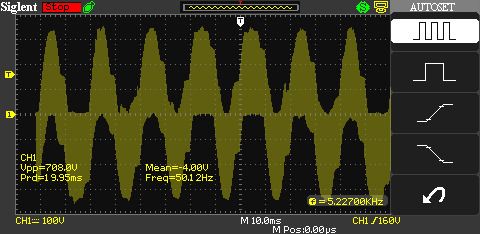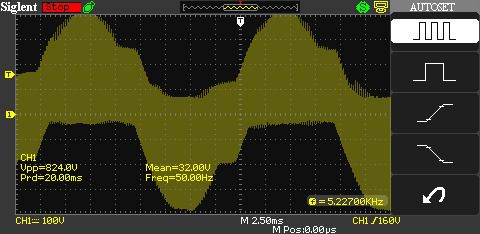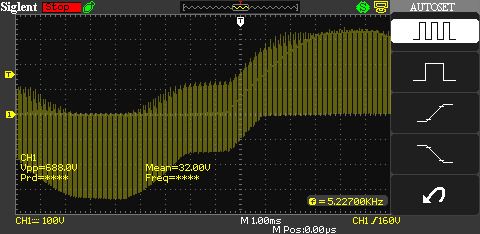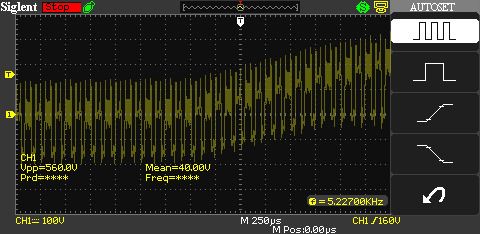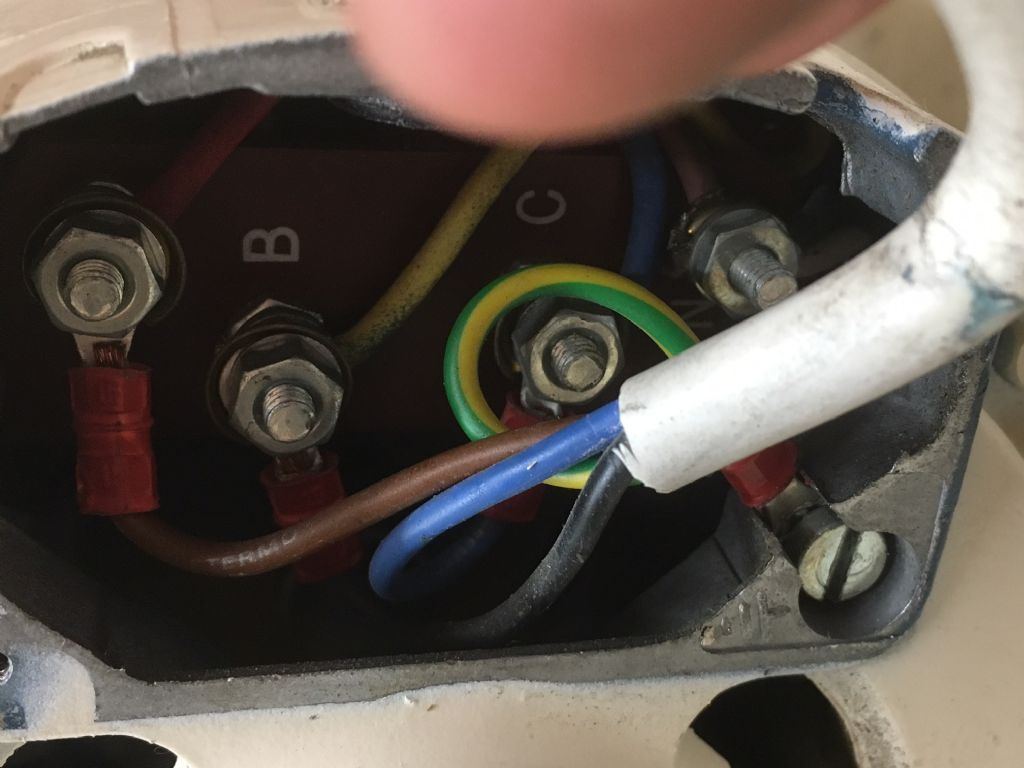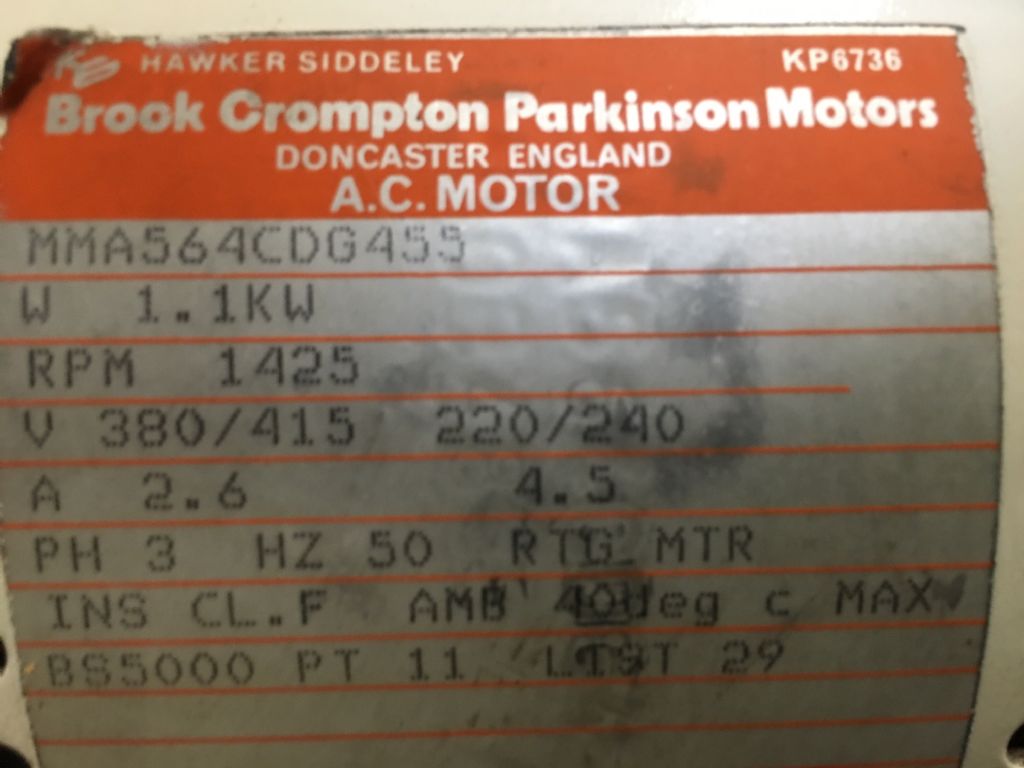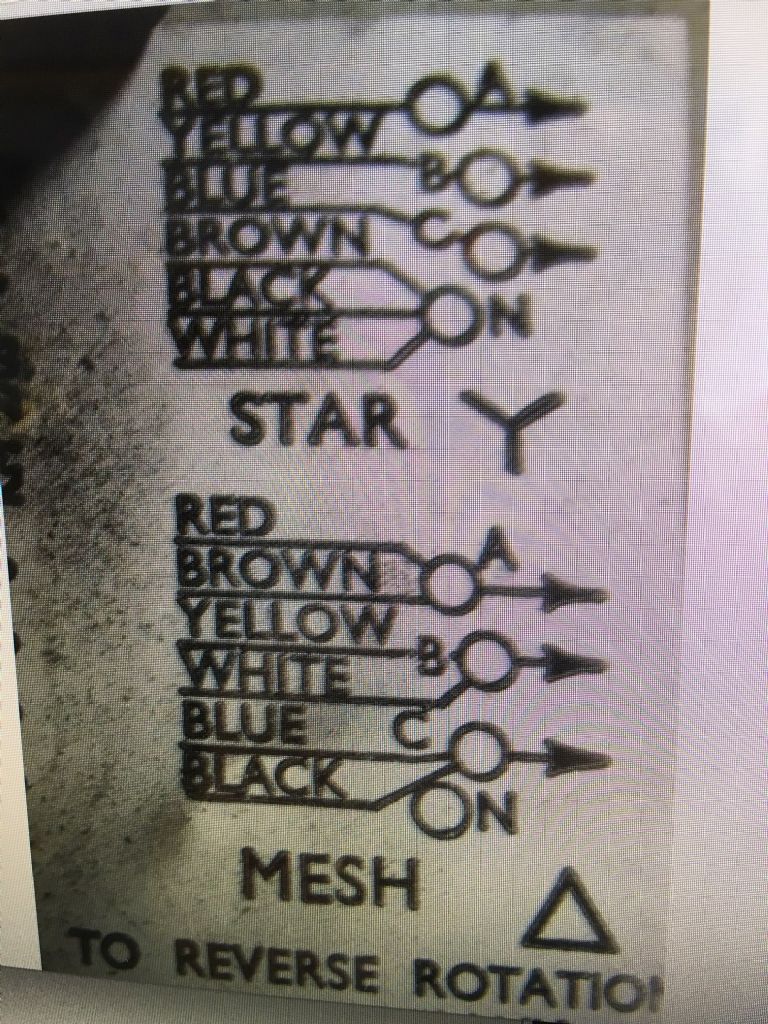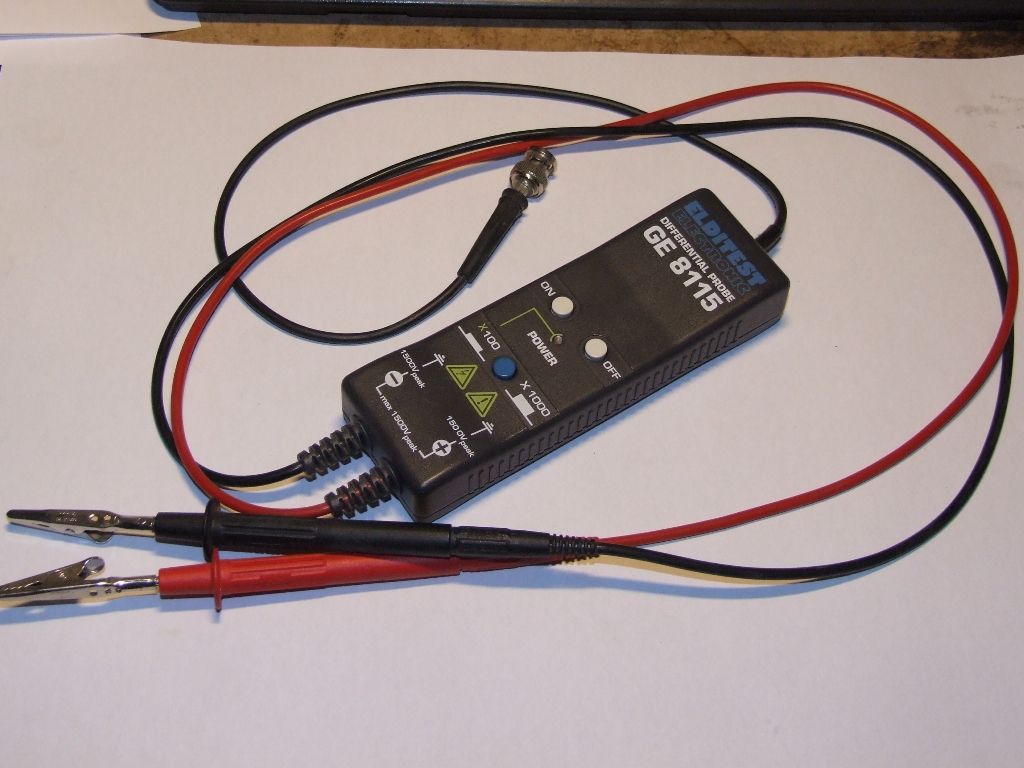Posted by Michael Gilligan on 19/06/2017 07:40:44:
Posted by Tony Pratt 1 on 19/06/2017 07:22:19:
Hi Guys,
…
I can hear a massive amount of buzzing on the radio.
…
Tony
…
VFD basically synthesise their "sinewave" so it looks something like this: **LINK**
…
MichaelG.
…
That's right, but the waveforms aren't so neat in the real world. Just for interest, here's some screenshots of the waveform output by my VFD on dead slow.

As you can see the waveform is a very rough approximation of a 50 Hz sine-wave.
Zooming in on the detail reveals how it's been built up




The 50Hz 'sine wave' seen by the motor is synthesised from a 10kHz square wave. Square waves are wonderfully efficient because the semiconductor switches inside the VFD are either fully on or fully off, which means they don't get hot. But those very fast on-off transitions create radio frequency energy. While DC and AC tend to stay with the cable RF has no such limitation. Rapidly alternating currents produce mutually supporting electric and magnetic fields that expand to infinity. Although most of the power produced by a VFD behaves like 50Hz AC, a proportion of it is RF that will radiate if it can. A good way to stop it is with earthed metal shields and perhaps a filter..
Sharp spikes produced by VFDs might cause grief inside older motors (pre 1980, allegedly). Although most old 3 phase induction motors 'just work', there are reports on the web of insulation failures and unwanted currents flowing in the bearings.
RF currents produce counter-intuitive effects. If, for example, you connect a 50Hz power source to the base of a large air-cored inductor, nothing much happens. A 100kHz power source connected to the same coil will produce spectacular effects like a Tesla Coil. A Tesla coil can be made by accident. If your motor/VFD combination starts producing big sparks, suspect a loose connection. It's important to fix it quickly; although RF created voltages are unlikely to cause much damage in themselves, they can start an arc that ordinary AC will sustain with thoroughly bad results.
Dave
Edit: checked it twice and still didn't see the typos before hitting save.
Edited By SillyOldDuffer on 19/06/2017 13:50:23
SillyOldDuffer.


